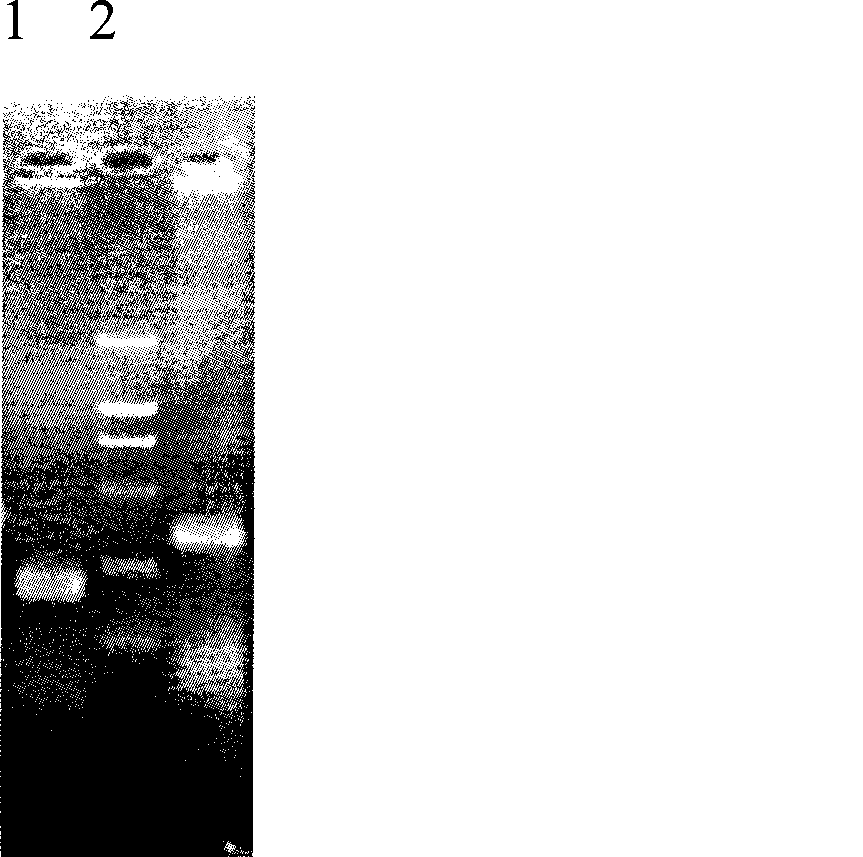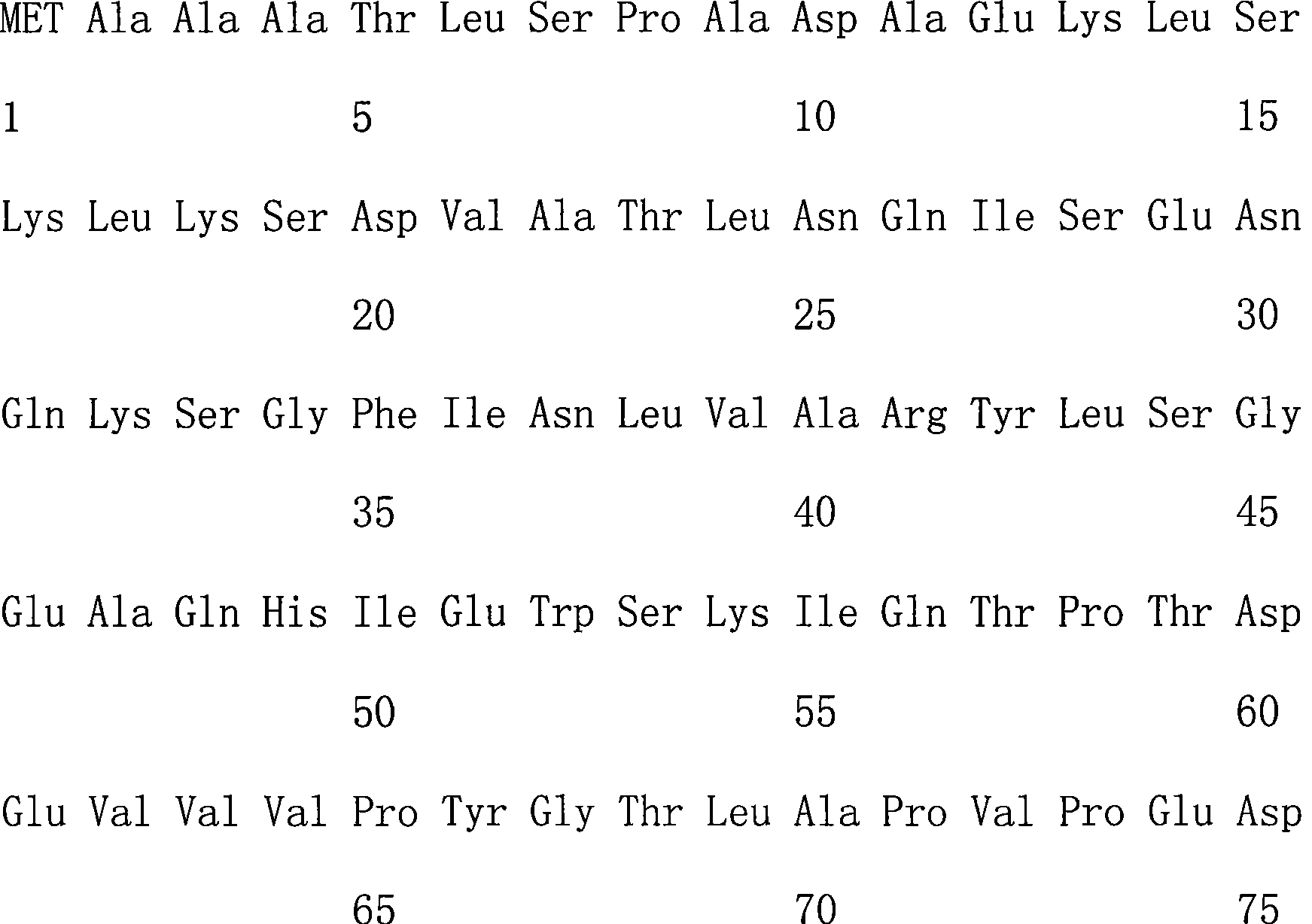Paulownia UDP-glucose pyrophosphorylase gene and use thereof
A technology of tunguridine diphosphate and uridine diphosphate, which is applied in the fields of application, genetic engineering, plant gene improvement, etc., can solve the problems of limited application range and application value, low strength and hardness, low bulk density, etc., and achieve improved plant The effect of quality or material
- Summary
- Abstract
- Description
- Claims
- Application Information
AI Technical Summary
Problems solved by technology
Method used
Image
Examples
Embodiment 1
[0023] Example 1: Cloning and sequencing of Paulownia partial UGP coding sequence
[0024] 1. Design of degenerate primers: the homology of plant UGP amino acids was analyzed by GenBanK BLAST system, and its complete homology part was selected, and degenerate primers were selected. All PCR primers involved in the present invention are listed below.
[0025] (1) Degenerate primers:
[0026] BUF 5'AARGAYGGNTGGTAYCCNCCNGG 3'
[0027] BUR 5'GGRTTNGGDATDATYTCCATYTT 3'
[0028] (2) 5' RACE primer:
[0029]Outer Primer 5'-taccgtcgttccactagtgattt-3'
[0030] Inner Primer 5'-cgcggatcctccactagtgatttcactatagg-3'
[0031] U.5GSP1 5’TGATTGCCTGTAAGTTGACCC 3’
[0032] U.5GSP2 5’GACATATTCTTTGCCCTGCGATA 3’
[0033] (3) 3'RACE Primer 3'RACE:
[0034] Outer Primer 5'-taccgtcgttccactagtgattt-3'
[0035] Inner Primer 5'-cgcggatcctccactagtgatttcactatagg-3'
[0036] U.3GSP1 5’TTGTTATCGCAGGGCAAAG 3’
[0037] U.3GSP2 5’ACACTAGCTGATGTGAAAGGTGGT 3’’
[0038] (4) Antisense gene primers:
[00...
Embodiment 2
[0070] Embodiment 2: Obtaining of unknown sequence upstream of Paulownia UGPmRNA 5':
[0071] A preferred solution is to use the 5'-FULL RACE kit (Code No: D315) produced by TaKaRa Company. The first step of this technical system is phosphorylation, the second step is to remove the cap, and the third step is to add a linker. Theoretically speaking, the first step eliminates all those that have lost their "caps", broken in the middle, and incomplete. Incomplete and incomplete mRNA, so that the unknown 5' end of the clone is complete, and the cloned mRNA may be full-length. At the same time, technologies such as adding specific adapters and nested PCR are used to amplify the full-length sequence of the 5' end of cDNA with high sensitivity and high specificity.
[0072] The partial coding sequence of Paulownia UGP was obtained by RT-PCR based on the obtained degenerate primers, and 2 specific nested PCR primers were optimized [see 1 in Example 1 (design of degenerate primers)]. ...
Embodiment 3
[0075] Embodiment 3: Obtaining of unknown sequence downstream of Paulownia UGP mRNA 3':
[0076] A preferred solution is to use 3'-FULL RACE Core Set Ver.20 (Code No: D314) produced by TaKaRa Company. This technology system uses technologies such as Oligad (T) adapters and primers added with specific sequences, so that the 3' end sequence of cDNA can be amplified more sensitively and specifically through the known partial cDNA sequence.
[0077] The partial coding sequence of Paulownia UGP was obtained by RT-PCR using the obtained degenerate primers, and 2 specific nested PCR primers were optimized [see 1 in Example 1 (design of degenerate primers)].
[0078] Concrete cloning procedures include: a. Extraction of total RNA of Paulownia: same as 2 (extraction of total RNA of Paulownia) in Example 1; b. Nested PCR reaction: the specific primer U.3GSP1 and 3' RACE OuterPrimer tested outside first [See 1 in Example 1 (design of degenerate primers)], perform PCR reaction, and then ...
PUM
 Login to View More
Login to View More Abstract
Description
Claims
Application Information
 Login to View More
Login to View More - R&D
- Intellectual Property
- Life Sciences
- Materials
- Tech Scout
- Unparalleled Data Quality
- Higher Quality Content
- 60% Fewer Hallucinations
Browse by: Latest US Patents, China's latest patents, Technical Efficacy Thesaurus, Application Domain, Technology Topic, Popular Technical Reports.
© 2025 PatSnap. All rights reserved.Legal|Privacy policy|Modern Slavery Act Transparency Statement|Sitemap|About US| Contact US: help@patsnap.com



